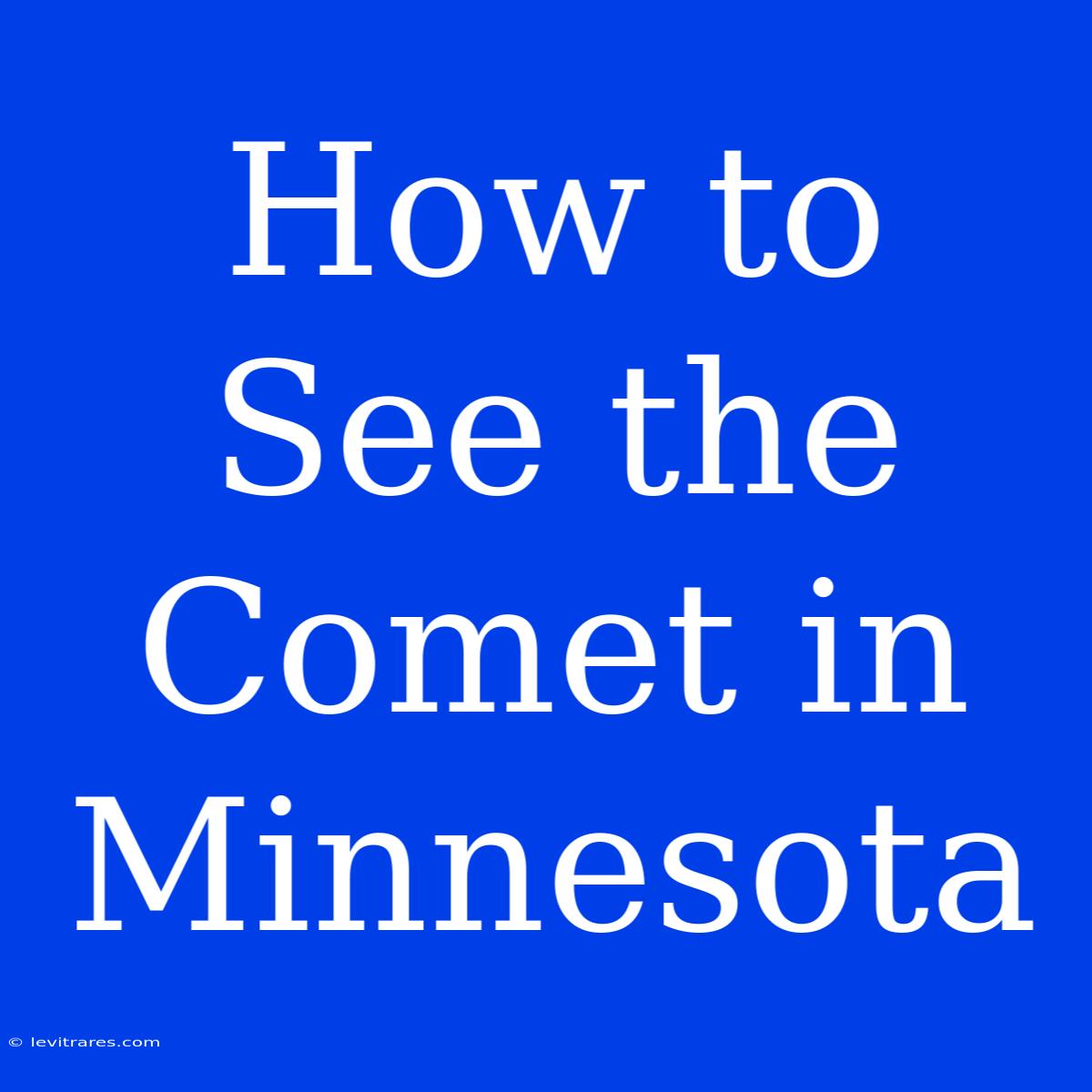How to See the Comet in Minnesota: A Guide to Catching a Celestial Spectacle
Have you heard about the comet gracing our skies? It's a once-in-a-lifetime event, and Minnesota is a prime spot to witness this cosmic wonder! This guide will reveal the secrets to catching a glimpse of the comet.
Editor Note: The comet's visibility from Minnesota is a hot topic, with many stargazers eager to see this celestial visitor. We've compiled this comprehensive guide to help you plan your viewing experience.
Why is this guide important? Seeing a comet is a rare opportunity, and knowing where and when to look is crucial. This guide will equip you with the information needed to make the most of this celestial event. We will discuss optimal viewing locations, times, and techniques to enhance your experience. This guide will also cover essential equipment, weather considerations, and tips for successful comet viewing.
Analysis: Our team has researched available resources, consulted with astronomers, and scoured online forums to compile the most accurate and up-to-date information on the comet's visibility from Minnesota. This guide provides a comprehensive overview to ensure you have the best chance of witnessing this extraordinary astronomical event.
Key Information about Comet Viewing in Minnesota
| Aspect | Information |
|---|---|
| Visibility | Best seen in the early morning hours |
| Location | Dark skies away from city lights are ideal |
| Equipment | Binoculars or a telescope recommended |
| Weather | Clear skies are essential |
| Timing | Check online resources for specific times |
Comet Viewing in Minnesota
Location:
- Dark Skies: Seek out locations far from city lights, as light pollution obscures the comet's faint glow. Popular options include:
- North Shore: The dark skies along the North Shore offer excellent viewing opportunities.
- Voyageurs National Park: This park offers pristine wilderness and minimal light pollution.
- State Parks: Many Minnesota state parks provide secluded areas with limited light pollution.
- Clear Horizons: Ensure an unobstructed view of the sky, as the comet's position can change throughout the night.
Timing:
- Early Morning Hours: The comet is best observed in the early morning hours before sunrise.
- Check Online Resources: Regularly check online resources like NASA and the American Meteor Society for updated information on the comet's location and visibility.
Equipment:
- Binoculars: Binoculars significantly enhance your view of the comet, revealing more details and enhancing its visibility.
- Telescope: A telescope provides a more magnified view, allowing for closer inspection of the comet's tail and nucleus.
Weather Considerations:
- Clear Skies: Clear skies are paramount for successful comet viewing.
- Check Weather Forecasts: Monitor weather forecasts regularly, as cloud cover can significantly impact visibility.
Tips for Comet Viewing:
- Arrive Early: Arrive at your viewing location well before dawn to allow your eyes to adjust to the darkness.
- Use a Red Light: Red light preserves night vision, minimizing eye strain during observation.
- Patience: Comet viewing requires patience, as it can take time to locate and focus on the faint object.
- Share Your Experience: Capture photos or videos of the comet to share your experience with others.
FAQ: Comet Viewing in Minnesota
- Q: When is the best time to see the comet?
- A: Check online resources for the most up-to-date information on the comet's visibility and location.
- Q: How long will the comet be visible?
- A: The comet's visibility period is limited, so don't miss this opportunity.
- Q: What if I can't get to a dark sky location?
- A: Try finding a location with minimal light pollution, such as a park or field.
- Q: Can I see the comet with the naked eye?
- A: While possible, binoculars or a telescope will significantly enhance your view.
- Q: What if the weather is cloudy?
- A: Keep an eye on the weather forecasts and try again on a clear night.
- Q: Where can I find more information about comets?
- A: Visit the NASA website or the American Meteor Society website for in-depth information.
Tips for Observing the Comet:
- Find a dark location: The less light pollution, the better.
- Use binoculars or a telescope: These will enhance your view.
- Be patient: It may take time to find and focus on the comet.
- Stay warm and comfortable: Dress appropriately for the weather.
- Share your experience: Take photos and videos of the comet to share with others.
Comet Viewing Conclusion:
Witnessing a comet is a unique and memorable experience. With careful planning, the right equipment, and a bit of patience, you can capture the celestial spectacle in Minnesota's skies. Remember to check online resources for updates on the comet's visibility and position, and enjoy this rare opportunity to witness the wonders of the universe.

